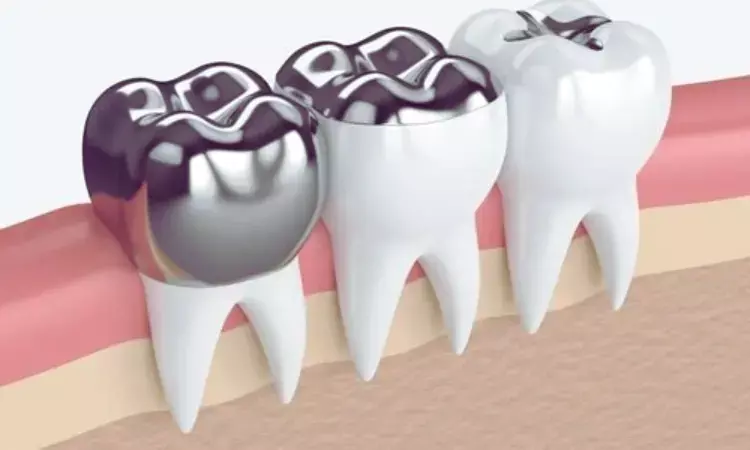- Home
- Medical news & Guidelines
- Anesthesiology
- Cardiology and CTVS
- Critical Care
- Dentistry
- Dermatology
- Diabetes and Endocrinology
- ENT
- Gastroenterology
- Medicine
- Nephrology
- Neurology
- Obstretics-Gynaecology
- Oncology
- Ophthalmology
- Orthopaedics
- Pediatrics-Neonatology
- Psychiatry
- Pulmonology
- Radiology
- Surgery
- Urology
- Laboratory Medicine
- Diet
- Nursing
- Paramedical
- Physiotherapy
- Health news
- Fact Check
- Bone Health Fact Check
- Brain Health Fact Check
- Cancer Related Fact Check
- Child Care Fact Check
- Dental and oral health fact check
- Diabetes and metabolic health fact check
- Diet and Nutrition Fact Check
- Eye and ENT Care Fact Check
- Fitness fact check
- Gut health fact check
- Heart health fact check
- Kidney health fact check
- Medical education fact check
- Men's health fact check
- Respiratory fact check
- Skin and hair care fact check
- Vaccine and Immunization fact check
- Women's health fact check
- AYUSH
- State News
- Andaman and Nicobar Islands
- Andhra Pradesh
- Arunachal Pradesh
- Assam
- Bihar
- Chandigarh
- Chattisgarh
- Dadra and Nagar Haveli
- Daman and Diu
- Delhi
- Goa
- Gujarat
- Haryana
- Himachal Pradesh
- Jammu & Kashmir
- Jharkhand
- Karnataka
- Kerala
- Ladakh
- Lakshadweep
- Madhya Pradesh
- Maharashtra
- Manipur
- Meghalaya
- Mizoram
- Nagaland
- Odisha
- Puducherry
- Punjab
- Rajasthan
- Sikkim
- Tamil Nadu
- Telangana
- Tripura
- Uttar Pradesh
- Uttrakhand
- West Bengal
- Medical Education
- Industry
Study Finds No Significant Link Between Dental Fractures and Amalgam Restorations

Brazil: A recent case-control study published in the Journal of Applied Oral Science has found no significant association between dental fractures and the presence of silver amalgam restorations. The research concluded that the type of restorative material, including amalgam and composite resin, did not notably impact the risk of tooth fractures, challenging previous assumptions about amalgam's role in dental failures.
Led by Luana Dos Santos Souza from the Universidade Estadual Paulista, Instituto de Ciência e Tecnologia, Departamento de Odontologia Restauradora, São José dos Campos, São Paulo, the study explored whether amalgam restorations increased the risk of dental fractures and assessed the influence of factors such as restoration size and wear facets.
The investigation involved 25 patients with fractured teeth restored with amalgam (case group) and 50 patients with non-fractured teeth, either untreated or restored with amalgam, composite resin, or other materials (control group). Researchers evaluated variables such as the type and extent of restorations, the remaining tooth structure, and the presence of wear facets.
Alginate impressions of the teeth were taken to create plaster models, which were then assessed by two calibrated examiners using digital calipers to measure the size and extent of fractures or restorations. Statistical analyses, including the Chi-square test and odds ratio calculations, were used to identify any significant associations.
Key Findings:
• No statistically significant difference was observed in the risk of fractures between teeth restored with silver amalgam and those restored with other materials.
• Fractures larger than 3.5 mm showed a fracture risk of 0.53 for amalgam restorations, but without statistical significance.
• The presence of wear facets did not notably increase fracture risk in amalgam-restored teeth, with an odds ratio of 1.357.
Based on the results, the researchers concluded that silver amalgam restorations do not significantly contribute to the likelihood of dental fractures. These findings provide important evidence against the belief that amalgam restorations elevate the risk of tooth failure.
"The study suggests that, under its specific conditions, there is no clear association between dental fractures and the presence of silver amalgam restorations," the authors wrote.
The study contributes valuable insights to the ongoing discussion around the safety and performance of amalgam restorations. While supporting their continued use, the authors highlight the need for further research to evaluate other factors affecting restoration longevity across diverse clinical settings and patient populations.
Dr Kamal Kant Kohli-MBBS, DTCD- a chest specialist with more than 30 years of practice and a flair for writing clinical articles, Dr Kamal Kant Kohli joined Medical Dialogues as a Chief Editor of Medical News. Besides writing articles, as an editor, he proofreads and verifies all the medical content published on Medical Dialogues including those coming from journals, studies,medical conferences,guidelines etc. Email: drkohli@medicaldialogues.in. Contact no. 011-43720751


